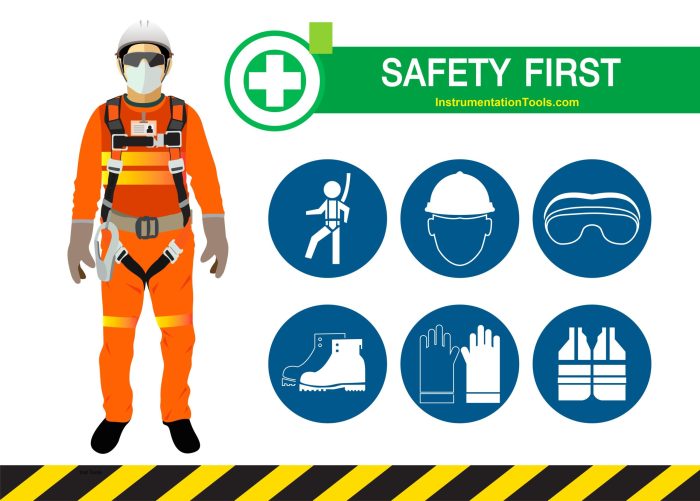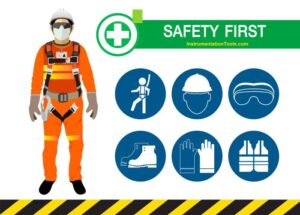
PPE requirements by industry play a crucial role in ensuring safety across various sectors, from healthcare to construction. Understanding these requirements not only helps protect employees but also enhances overall workplace productivity and compliance with regulations.
Across different industries, the types of personal protective equipment (PPE) vary significantly, tailored to meet specific hazards and challenges. Regulatory bodies enforce standards that guide employers and employees in selecting and using appropriate PPE, making it essential knowledge for anyone involved in workplace safety.
PPE Requirements by Industry Overview
Personal Protective Equipment (PPE) plays a crucial role in safeguarding the health and safety of workers across various industries. The importance of PPE cannot be overstated, as it acts as the first line of defense against workplace hazards. From construction sites to healthcare facilities, the right protective gear helps prevent injuries, illnesses, and fatalities.Common types of PPE utilized across different sectors include gloves, helmets, safety goggles, masks, and high-visibility clothing.
Each industry has specific standards and regulations to ensure the proper use of PPE. Regulatory bodies, such as OSHA (Occupational Safety and Health Administration) in the United States, set guidelines and standards that govern PPE requirements to help protect workers.
Healthcare Industry
In hospitals and clinics, specific PPE requirements are essential to protect healthcare workers and patients alike. Common PPE includes gloves, gowns, masks, face shields, and respirators. The role of PPE in infection control is critical, especially in the prevention of the spread of infectious diseases. For instance, during the COVID-19 pandemic, the use of appropriate PPE became a cornerstone of patient safety.Healthcare professionals often utilize various forms of PPE, tailored to their specific roles.
Surgeons, for instance, wear sterile gowns and masks during operations, while nurses may use gloves and face shields when caring for patients exhibiting flu-like symptoms.
Construction Industry
The construction industry requires a broad range of PPE to ensure the safety of workers on site. Essential items include hard hats, steel-toed boots, high-visibility vests, and safety harnesses. The use of PPE is vital in preventing workplace injuries, which can range from minor cuts to severe accidents that could lead to fatalities.Statistics indicate that compliance with PPE regulations significantly reduces the risk of accidents.
According to the Bureau of Labor Statistics, proper PPE usage can reduce construction site injuries by over 30%. This underscores the importance of adherence to safety protocols in construction settings.
Manufacturing Industry

In the manufacturing sector, PPE requirements vary based on the specific processes involved. Essential PPE items may include earplugs, safety glasses, gloves, and respirators, which help mitigate hazards associated with noise, chemicals, and machinery.Employers face serious implications if there is non-compliance with PPE regulations. For instance, fines and penalties can be levied, and the risk of accidents increases. Ensuring that workers have access to and are trained in the proper use of PPE is imperative for maintaining a safe manufacturing environment.
Hospitality and Restaurant Industry
PPE usage in the hospitality and restaurant industry is primarily focused on food safety and hygiene. Kitchen staff often wear gloves, aprons, and hairnets to prevent contamination during food handling and preparation. Best practices for PPE in these settings include regular training for staff on hygiene protocols and ensuring that PPE is readily available. Maintaining high standards of hygiene not only protects staff but also enhances customer safety, making PPE a vital aspect of the hospitality industry.
Retail Industry

In retail environments, PPE requirements are becoming increasingly important, especially in light of health crises such as pandemics. Masks, gloves, and sanitization gear are commonly used to protect employees and customers alike. The implementation of PPE enhances safety by creating a safer shopping experience, which is crucial for maintaining customer confidence. Grocery and retail settings often adopt specific PPE protocols to ensure that both employees and customers can feel secure while shopping.
Business Management and Workplace Safety
Management plays a fundamental role in ensuring PPE compliance across all industries. Establishing a culture of safety involves providing training and resources for employees to understand the importance of PPE usage. Strategies for achieving this include regular safety meetings, creating visual reminders about PPE protocols, and incentivizing compliance through recognition programs. A clear PPE policy within an organization can foster an environment where safety is prioritized.
Risk Management
Incorporating PPE into a risk management strategy is crucial for identifying and mitigating potential hazards. Inadequate PPE can lead to significant risks, including workplace injuries and illnesses. To assess and mitigate risks linked to PPE, organizations should conduct regular safety audits, training sessions, and feedback mechanisms. This proactive approach helps ensure that employees are protected and aware of the potential dangers associated with their work.
Business Innovation in Safety Practices
Innovative approaches to improving PPE effectiveness are gaining traction in various industries. Advancements in technology are transforming the manufacturing and usage of PPE, leading to more efficient and comfortable protective gear. Companies are investing in research and development to create smart PPE, which can monitor environmental conditions and alert workers to potential hazards. Notable examples include wearables that track exposure to harmful substances, enhancing overall workplace safety.
Team Building Around Safety Culture
Fostering a culture of safety that includes PPE compliance requires team building and motivation. Encouraging team members to prioritize safety can be achieved through workshops, safety challenges, and collaborative training sessions. Activities focused on workplace safety not only enhance team cohesion but also reinforce the importance of PPE usage, making safety a shared responsibility among all employees.
Workplace Communication Regarding PPE
Effective communication about PPE requirements is essential for ensuring that all employees understand their roles in maintaining safety. Strategies for enhancing communication can include clear signage, regular updates, and open channels for feedback regarding PPE policies. Feedback is vital in refining PPE protocols and ensuring that they remain relevant to the challenges faced by employees. Keeping communication lines open fosters a culture of safety and encourages continuous improvement in PPE practices.
Business Outsourcing and PPE
Outsourced labor agreements often involve specific PPE considerations that need to be addressed upfront. Ensuring that outsourced workers have access to appropriate PPE is crucial in maintaining safety standards across an organization. Outsourcing can complicate PPE compliance, as different companies may have varying standards. Industries that rely heavily on outsourcing, such as manufacturing and construction, must establish clear guidelines to ensure all workers are adequately protected.
Business Networking for Safety Advocacy
Networking among businesses can significantly enhance knowledge about PPE best practices. Collaborations across industries can lead to improved safety standards and shared insights on effective PPE usage. Success stories of businesses that have networked for better safety standards often highlight the positive impact of collective efforts in addressing common safety challenges. Such partnerships foster a community of safety advocates committed to improving workplace conditions.
Strategic Planning for PPE Implementation
Incorporating PPE into a strategic business plan requires careful consideration and planning. Steps may include assessing current safety measures, identifying gaps, and setting clear objectives for PPE implementation. Metrics for evaluating PPE effectiveness should be established to monitor compliance and identify areas for improvement. Companies with strong PPE strategies often showcase successful case studies that demonstrate the positive impact of proper PPE usage on employee safety and overall business success.
Final Wrap-Up
In summary, proper adherence to PPE requirements by industry is vital for safeguarding workers and promoting a culture of safety within organizations. By understanding the specific needs and regulations of each sector, businesses can foster a safer work environment and prevent accidents, ensuring that both employees and customers remain protected.
Question & Answer Hub
What is PPE?
PPE, or personal protective equipment, includes gear designed to protect workers from hazards that could cause injury or illness.
Why is PPE important in the workplace?
PPE is crucial for minimizing the risk of injuries and illnesses associated with exposure to various workplace hazards.
How do I choose the right PPE for my industry?
Selecting the right PPE involves assessing the specific hazards of your industry and adhering to regulations set forth by governing bodies.
Are there penalties for non-compliance with PPE requirements?
Yes, employers can face fines and legal repercussions for failing to provide appropriate PPE and ensure compliance among workers.
How often should PPE be inspected for safety?
PPE should be inspected regularly, typically before each use, and maintained or replaced as needed to ensure its effectiveness.




